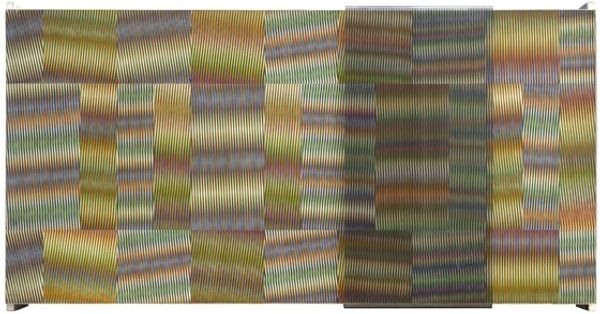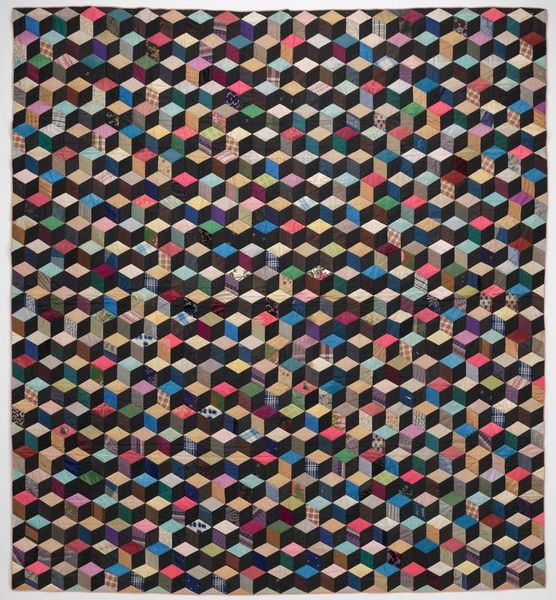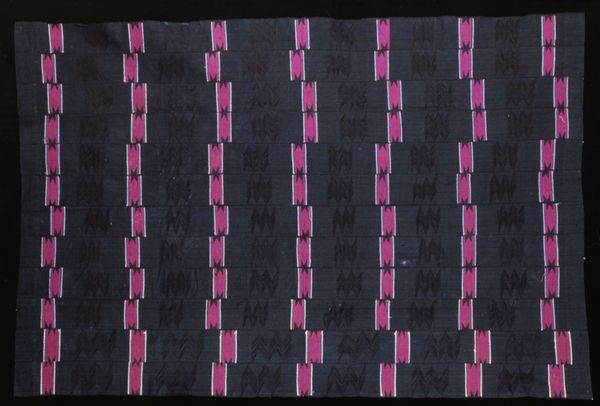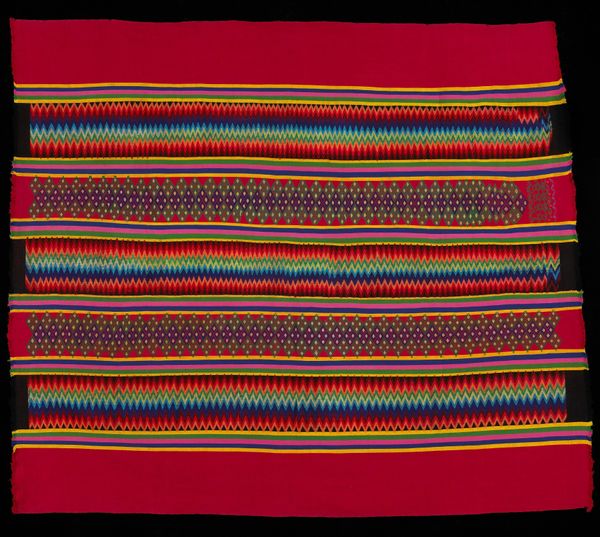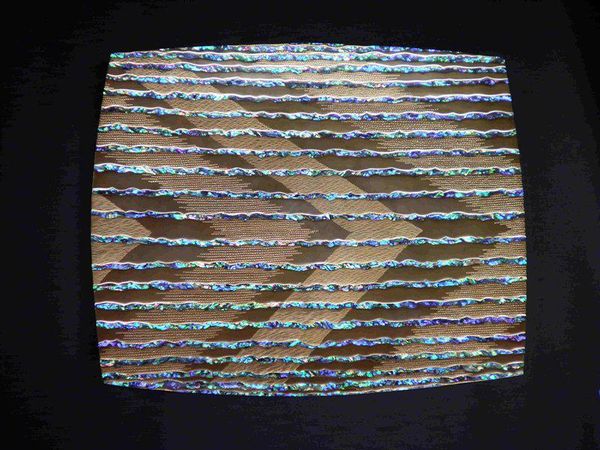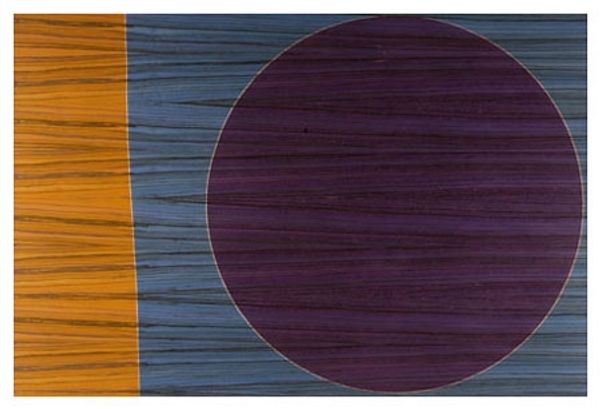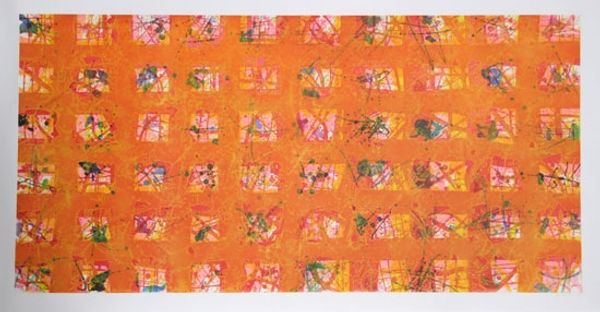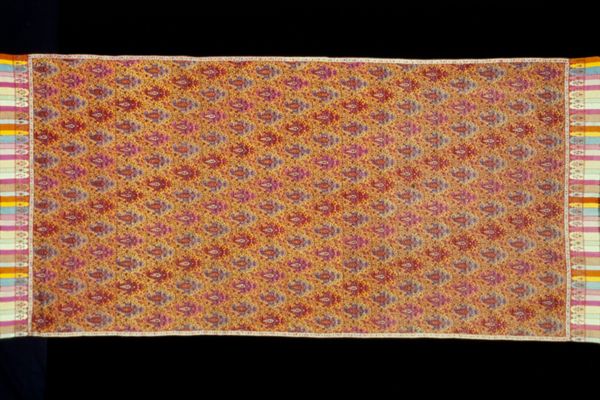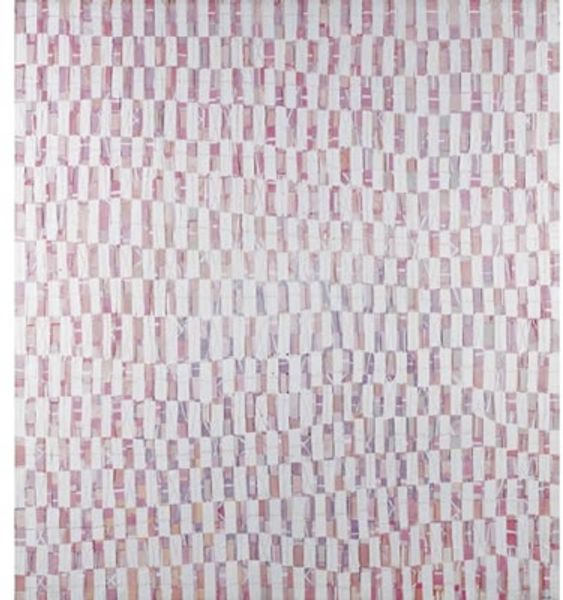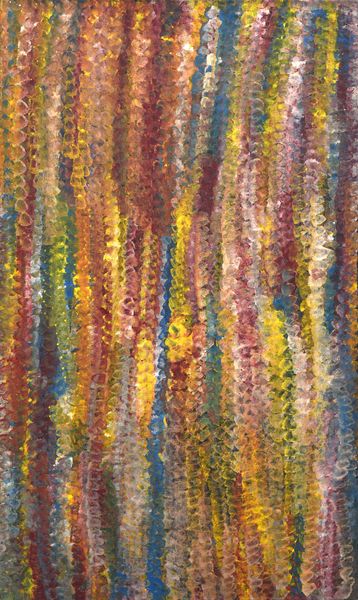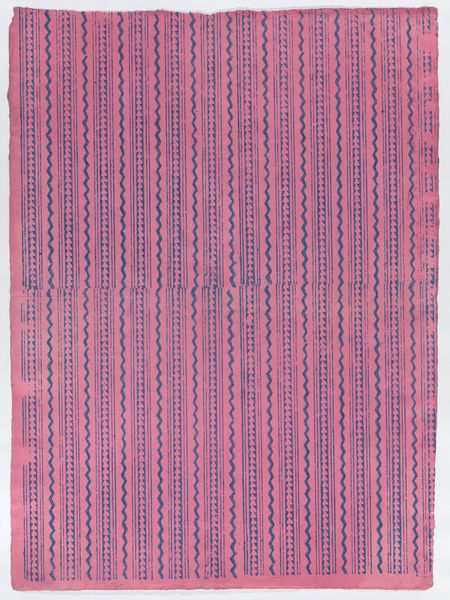
painting, oil-paint
#
abstract-expressionism
#
abstract expressionism
#
abstract painting
#
painting
#
oil-paint
#
abstraction
#
line
#
abstract art
#
modernism
Copyright: Ronnie Landfield,Fair Use
Curator: Ronnie Landfield's "Red Line Painting," created in 1968 using oil paint, presents an intriguing study in abstract expressionism. Editor: My first impression is a sense of organized chaos, or perhaps constrained energy. The parallel lines fight against the painting's borders as though wanting to escape. Curator: That’s an interesting reading, and it makes me consider Landfield’s process. Looking at the lines, the materiality of the oil paint, I wonder about the physical labor that went into creating such precise, yet energetic strokes, and how it compares to say, commercial painting or printmaking of that era. Editor: Yes, and let’s consider that 1968 wasn’t just any year. Social upheaval, civil rights struggles, the Vietnam War—it was a period of intense socio-political turmoil. Viewing this piece through that lens, could those tightly packed lines symbolize constraint, a cry for freedom amidst societal pressures? Perhaps the “red line” signifies a boundary being challenged? Curator: I appreciate that connection. Thinking of boundaries, let’s delve deeper into the notion of the “red line.” Is it a division, a limit, or perhaps a pathway? Does it allude to something literal like urban planning, the color’s chemical composition in relation to its availability, and, consequentially, its pricing and place in society? Editor: The red line could represent anything from economic divides to race relations or the very literal lines drawn to define zones of conflict, be it class warfare, cultural clashes, etc. I like how it also encourages viewers to consider systems of power that dictate who has the ability to cross the proverbial or literal line, and what the consequences could be. Curator: Indeed. Analyzing the process of its creation invites speculation on how its place was assured in a late 60s milieu while acknowledging its lasting place in contemporary discussions. Editor: Precisely, a painting so simply constructed invites a surprisingly complex set of societal questions.
Comments
No comments
Be the first to comment and join the conversation on the ultimate creative platform.
